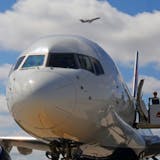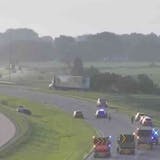Last Monday's early morning crash that killed a southern Minnesota man who was going the wrong way on Interstate 394 brought in a volley of e-mail from Drive readers like Linda, who asked what to do if they ever find themselves in the frightening situation with a speeding car coming straight at them.
Pray, and move to the right. Short of that, there is no perfect answer for dodging another driver.
Though crashes involving wrong-way drivers constitute only 3 percent of all motor vehicle wrecks, according to state and national data, they are becoming more common. Over the past five years, wrong-way crashes on Minnesota roads have risen from 466 in 2011 to 536 last year, according to the Minnesota Department of Public Safety (DPS). That includes 123 fatal crashes with 155 deaths.
The latest occurred at 3:30 a.m. May 2 when Ronnell Ross, 30, of Clarks Grove, drove westbound in the eastbound lanes of I-394 and collided head-on with another motorist at Theodore Wirth Parkway in Minneapolis. Ross died in the crash and an Apple Valley man in the vehicle Ross hit suffered serious injuries, the State Patrol said.
As disastrous as wrong-way crashes are, just seeing a driver going in the wrong direction is enough to scare the bejesus out of us. Already this year, the Minnesota State Patrol has fielded 172 calls about motorists driving the wrong way on metro-area roads and 431 statewide. Thankfully, the vast majority of those wayward motorists realize their mistake, turn around and head in the proper direction without incident, said the patrol's Lt. Tiffani Nielson.
In cases where they don't, "there is not always a lot of time to make a decision," Nielson said. "Slow your speed to interpret what is happening. If something looks strange, trust your gut; move onto the shoulder if it looks bizarre."
Driver impairment is lead cause
Wrong-way drivers often end up in the left lane of multilane highways because they think they are in the right-hand lane for their direction of travel, Nielson said. So the best defense is to be attentive and sober, and avoid using the left lane, especially in the overnight hours when most wrong-way drivers are out.
It's not clear how or where Ross got onto I-394, but driver impairment is the leading factor in wrong-way crashes. As many as 75 percent of wrong-way drivers are not sober, according to a 2012 report from the National Transportation Safety Board (NTSB). The report also found that driver confusion and road layout are contributing factors, and it recommended engineering changes that could reduce wrong-way driving.



